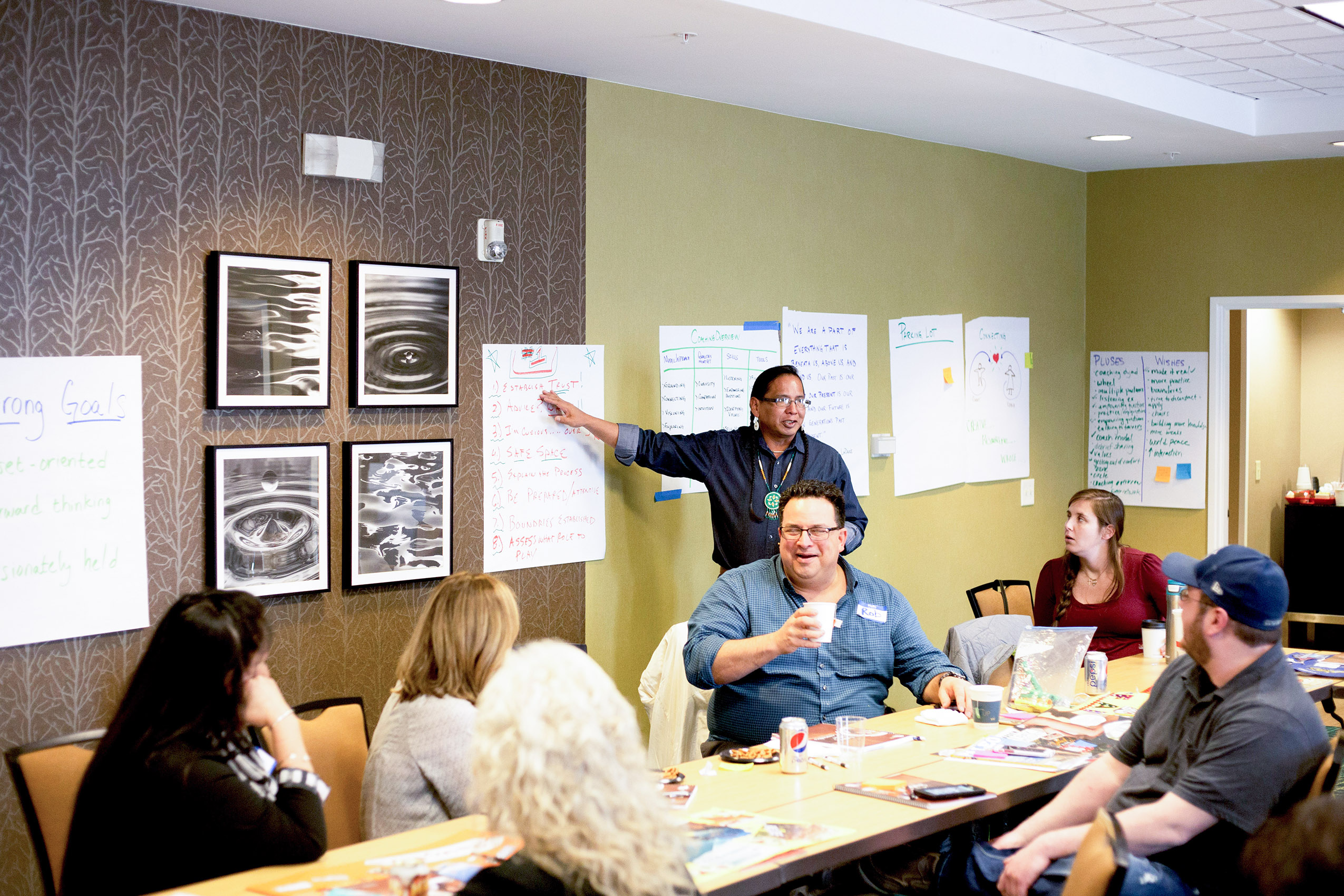By Oweesta
Bridgette’s life was transformed when her local CDFI helped her secure stable income and transportation, a safe home, and freedom from debt. Now she’s sharing her financial skills and knowledge with others in her community.
First Nations Oweesta (Oweesta), a Native CDFI intermediary, works with Native CDFIs that serve Native American, Alaska Native and Native Hawaiian populations. The population served by Oweesta and its cadre of Native CDFIs is typically younger than the national average, low-income and experiences very high unemployment (37% are unemployed). These economic conditions are fueled by historical injustice, as most reservations were forcibly placed in remote and isolated areas lacking natural resources or other means for establishing a functional economic base. Over half of Native individuals live in isolated rural locations and have lived in cash economies for generations as no conventional financial outlets were present or accessible on reservation lands.
Oweesta tackles unemployment and financial education by expanding access to capital for Native CDFIs and by building the financial capability of individuals and organizations throughout Indian Country. One of the tools used for establishing a strong foundation of financial education includes the Building Native Communities: Financial Skills for Families (BNC) train-the-trainer program, which includes an intensive three-day train-the-trainer workshop. Participants in the workshop must pass a knowledge-based certification exam before receiving accreditation. Once an instructor has been certified, he or she receives access to a range of teaching tools for use in his or her tribal community. Since 2001, over 35,000 individuals have received certification and tens of thousands of tribal members have learned the tools and skills needed to build their individual assets through the provision of the BNC curriculum. The curriculum is the most widely used in Indian Country since its inception and is now in its 5th edition. The success of the BNC program is centered on its cultural relevancy translating traditional values and practices in managing resources into mainstream financial systems.
Native CDFIs have become institutional financial pillars in their communities, changing the economic landscape with the provision of capital opportunities provided in conjunction with capacity building trainings and courses promoting individual, small business and homeownership asset building opportunities. The following stories reflect the incredible changes Native families and communities can experience when presented with opportunities to further their financial aspirations and goals.
The Fort Belknap Indian Reservation is located in Blaine County, Montana and is home to the Assiniboine and Gros Ventre Tribes. With 54.4% of the population living below the poverty line, Blaine County is an isolated and rural county located near the US and Canadian border with half of the population comprised of Native Americans. One tribal member, Bridgette, (Assiniboine) struggled working odd jobs while supporting her son Liam with no vehicle. Living with her brother and father, resources were scarce for the family. Determined to find gainful employment, she made the most of an opportunity when the local Native CDFI offered her a temporary job. She quickly demonstrated a strong work ethic and garnered the trust of the team resulting in full time employment. With a stable source of income, she was able to pay off all of her overdue bills, transitioned from public assistance and purchased a vehicle. She then succeeded in securing a home for her and her son, gaining economic independence. In July 2018, Bridgette then attended the Building Native Communities: Financial Skills for Families train-the-trainer in Anchorage, Alaska. She came back to Montana with a brand-new perspective on life and gained an incredible skillset in managing her personal finances. Bridgette knew the only path for a better life included setting financial goals and becoming more aware of how she was spending her money and what she was saving. Leading by example, Bridgette is now one of the lead instructors for the Fort Belknap Education Department – Credit Financial Literacy Team on the Fort Belknap Indian Reservation spreading the knowledge of financial empowerment to her fellow tribal members.
Another example of success occurred in Gallup, New Mexico. Gallup is a rural community of 22,000 people located in McKinley County in the Northwest corner of New Mexico. Located in close proximity to the Navajo, Hopi and Zuni Reservations, almost half of the population is Native American. It is among the counties with the highest poverty rates in the country, even among persistent poverty counties. Alliayah attended Gallup Central High School during her senior year and was required to take the Building Native Communities: Financial Skills for Families financial literacy class. The courses taught her best practices in personal financial management, and also covered information on how to successfully build and manage credit to be better prepared when it’s time to apply for a credit card or a loan.
Alliayah then contacted her local Native CDFI, knowing she had no credit, to see if there were any opportunities to build her personal assets and begin establishing a credit history. The Native CDFI worked with her and provided a credit builder loan to help with the establishment of credit. After successfully working with the CDFI and slowly using and managing credit issued to her by the institution, she now has a credit score of 719, an important milestone given how she saw how much her parents struggled without good credit growing up.
These examples are among thousands of stories that occur when safe and affordable capital and culturally appropriate training to marginalized communities is provided. Oweesta’s work as an intermediary lender and national capacity building trainer supports local tribal efforts to provide personal and community asset building opportunities for tribal nations and populations across the nation.
